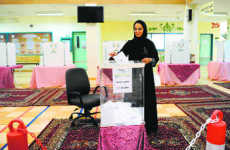Tokyo, At least 30 climbers are feared dead after being found on Sunday by emergency teams on Mount Ontake, Japan’s second-highest volcano, which erupted the previous day.
The victims were found near the peak of the 10,062-foot mountain and appear to have been knocked unconscious by debris erupting from the volcano, or were overcome by the dense ash or toxic fumes. These were the first fatalities from a volcanic eruption in Japan since 1991.
As of midday, local authorities said that a further 45 hikers were still unaccounted for.
More than 60 people have aslo been injured, with around 40 of those in serious conditions.
Helicopters from the Japan Self-Defence Forces were searching the mountain slopes on Sunday and at least seven hikers who had endured a night amid the clouds of ash billowing from the volcano were winched aboard and flown to safety.
About 250 people are thought to have set out to scale the mountain on Saturday, with those on the lower slopes able to retrace their steps to safety after the volcano erupted without warning at 11.53 am.
On the borders of Gifu and Nagano prefectures some 125 miles west of Tokyo, the peak last erupted in 1979.
Television footage showed images of hikers dazed and coated in thick layers emerging from clouds of ash to be met by emergency teams.
Images taken from aircraft circling the mountain also showed ash pouring out of large vents in the face of the peak and nearby mountain huts covered in grey debris. Other buildings appeared to have been badly damaged by the force of the eruption.
“The eruption was very loud, even this far away,” said Mitsuko Ando, owner of the Kaida No Popoya restaurant, which has a view of the peak from 9 miles to the south.
“There were a series of minor earthquakes that we felt in the days before the eruption, but we didn’t really think much of them because it’s not unusual,” she told The Telegraph.
“This has really come as a surprise,” she added. “Yesterday, the smoke was rising about 3 km [1.8 miles] above the very top of the mountain and we can still see smoke pouring from areas near the top.
“And the ash has been falling here, leaving a fine coating across the garden.”
Climber Mikio Oguro told national broadcaster NHK that vast plumes of smoke suddenly poured out of the crater, blocking out the sun and reducing visibility to zero.
“Massive amounts of ash suddenly fell and the entire area was immediately covered,” he said. “My colleagues later told me that they thought they might die.”
Huts on the mountain were quickly filled with people taking refuge.
“All of a sudden, ash pile up so quickly that we couldn’t even open the door,” Shuichi Mukai, who works in a mountain hut, told Reuters.
“We were really packed in here, maybe 150 people,” he added. “There were some people crying, but most people were calm. We waited there in hard hats until they told us it was safe to come down.”
Experts have warned that the eruption could continue for some time and that there is a risk of pyroclastic flows down the flanks of the mountain. Authorities have also declared an area 4 miles from the peak to be a danger zone and have warned local people to beware of falling debris, including cinders that could ignite fires




 Driving Naari Programme launched in Chandigarh
Driving Naari Programme launched in Chandigarh






























